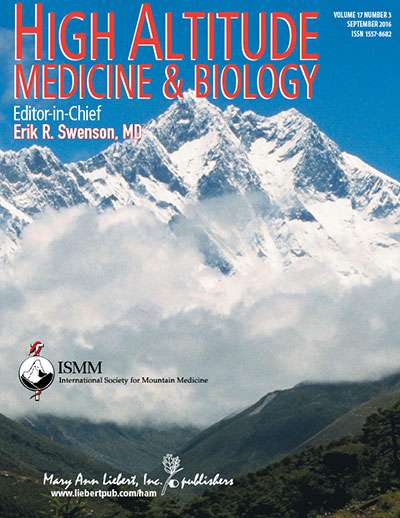Consensus by international federation on drug use at high altitude

Drug taking at high altitude is variably intended to enhance performance, prevent or alleviate the debilitating effects of altitude, or for pleasurable use. In some cases, certain drugs can be advantageous and even life-saving, but many drugs lack evidence of benefit and carry risks of side effects or interactions. The International Climbing and Mountaineering Federation (UIAA) has published evidence-based guidelines advising on the safe use of alcohol, steroids, oxygen, erythropoietin, and many other types of drugs in mountain environments in an article in High Altitude Medicine & Biology.
An international team of researchers from Kuwait, Austria, United Kingdom, Germany, Switzerland, Nepal, Spain, France, and the Netherlands, led by David Hillebrandt, MB, BS, President, UIAA Medical Commission, coauthored the article entitled "Drug Use and Misuse in the Mountains. An UIAA MedCom-Consensus Guide for Medical Professionals." They conducted an extensive review of the medical literature, trials, observational studies, and case series to assess the evidence available for drugs commonly used by mountain climbers. Their conclusions and recommendations cover a broad range of drug types including alcohol, anabolic agents such as androgenic steroids, adrenergic agonists, beta-blocking agents, erythropoietin, oxygen, glucocorticosteroids, benzodiazepines, and stimulants such as amphetamines.
"The use of drugs beyond those proven effective in preventing and treating high altitude illnesses remains very controversial among both physicians and climbers," says Erik R. Swenson, MD, Editor-in-Chief of High Altitude Medicine & Biology and Professor, Division of Pulmonary and Critical Care Medicine, Veterans Administration Puget Sound Healthcare System. "This broad and comprehensive review of the myriad drugs used for various purposes in climbing will be useful to all concerned in decision-making about their use, determining the level of supportive evidence, and importantly their potential costs and adverse effects."
More information: Enrico Donegani et al, Drug Use and Misuse in the Mountains: A UIAA MedCom Consensus Guide for Medical Professionals, High Altitude Medicine & Biology (2016). DOI: 10.1089/ham.2016.0080
















